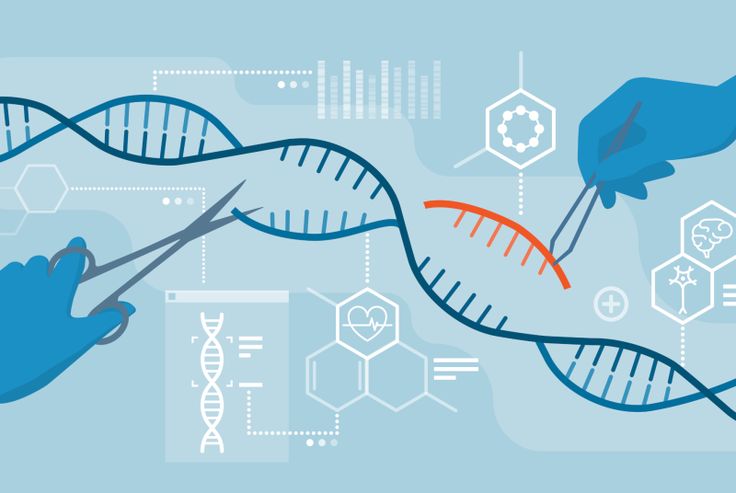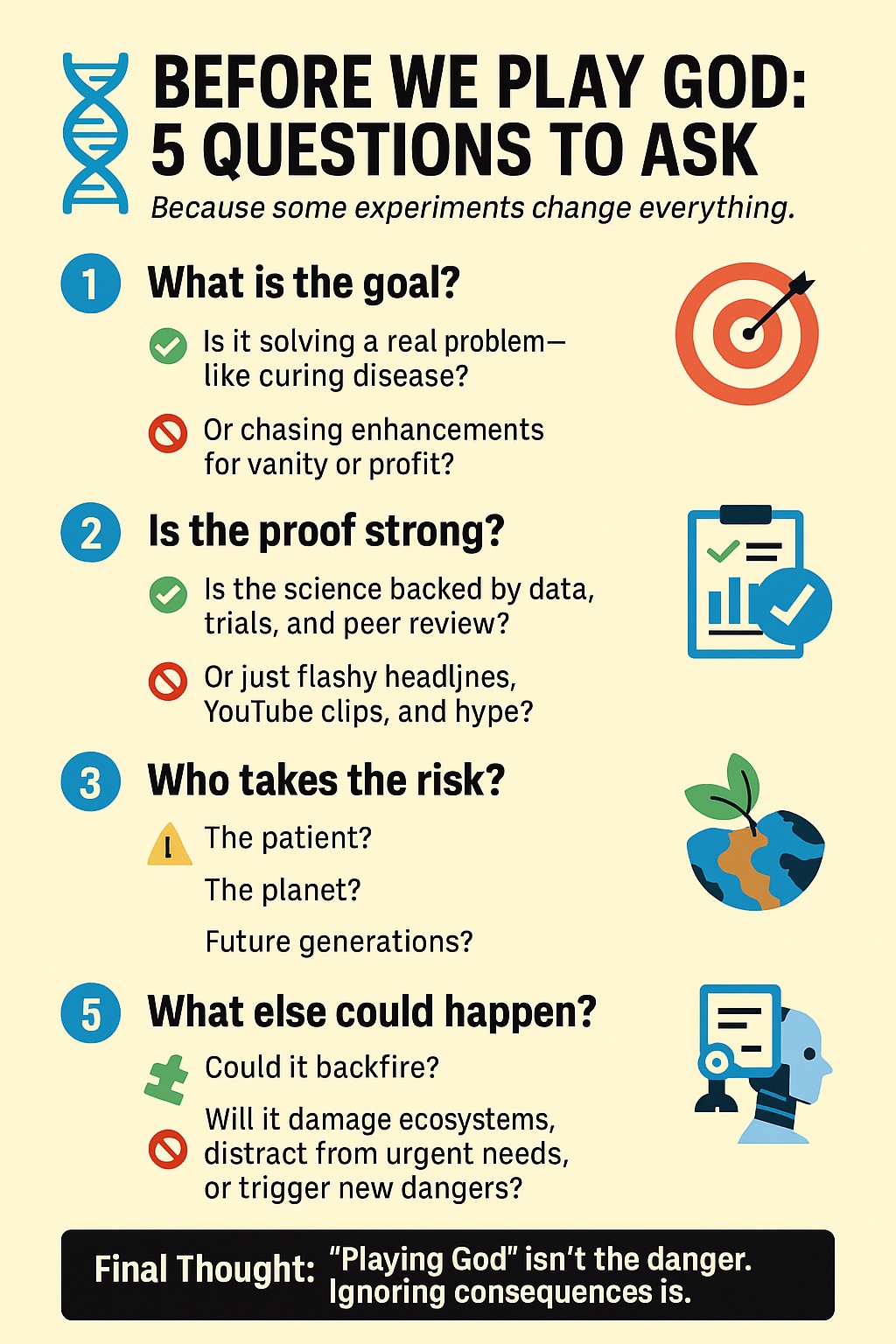Look around you; everywhere you turn, there is proof that humans are endlessly curious. “What makes this thing tick? Why are plants green? Why do things fall and not levitate or suspend in the air?”
Yep! We have an unstoppable curiosity.
Being curious is not necessarily a bad thing, as this same curiosity has led us to discover amazing things, such as electricity, cloning, artificial intelligence, heart surgery, gene editing, and even ideas to bring back certain animals from extinction, for example, the woolly mammoth.
“From Mary Shelley’s Frankenstein to shocking animal experiments and today’s efforts to revive species of animals that have long been extinct, or the process of awakening ancient viruses.”
However, just like everything that has a good side, there is also a bad side. While curiosity is beneficial, it can also lead to risks. There is a thin line between curiosity and going too far, for instance, trying things without really understanding the consequences.
When humans start controlling life, death, or nature in big ways, people often say that they are “playing God.” While this may seem like an overreaction, it could also be viewed as a serious warning.
In this article, we will look at famous examples of when science seemed to cross the line. From Mary Shelley’s Frankenstein to shocking animal experiments and today’s efforts to revive species of animals that have long been extinct, or the process of awakening ancient viruses. We will also connect these stories to current events, such as artificial intelligence, gene editing, and de-extinction projects.
Get ready because the history of science is full of bold moves, big mistakes, and the lessons we are still learning today.
Humans Playing God: “What Does It Actually Mean?”
People always say the phrase “humans playing God” whenever humans claim powers that are traditionally meant for nature, fate, or a deity. It appears when humans undertake actions such as creating life from dead tissue, rewriting DNA in embryos, transferring consciousness to a new body, resurrecting extinct species, or reviving ancient pathogens.
However, can we really say humans are playing God? Is it really a black or white situation?
Surgeons can transplant hearts to save lives, right? When an embryo is edited so that a child can avoid inheriting a deadly disease like sickle cell, people praise the act. Still, when the embryo is edited to have taller, stronger, blue-eyed babies, there is a public outcry. Why?
“Real scientists were shocking dead animals with electricity in public experiments.“
This is because people worry more when three things pile up, or when they happen simultaneously. These things are power, uncertainty, and weak oversight.
Remember these three key points as we review the timeline of experiments humans have conducted in the past and what we are currently exploring.
The Story of Frankenstein
Mary Shelley wrote Frankenstein, or The Modern Prometheus, in 1816 when she was just 18 years old. She was spending the summer with poets and thinkers in Switzerland, and they were all discussing exciting new scientific developments, including galvanism. Galvanism was the idea that electricity could bring dead things back to life, or at least make dead muscles move.

In her story, Victor Frankenstein builds a creature from human body parts and uses a mysterious “spark” to bring it to life. However, instead of taking care of his creature, he ran away. That decision, not the actual life Victor created, is the main lesson of the story.
At that time, real scientists were shocking dead animals with electricity in public experiments. Some even went so far as to use human bodies. These strange and scary experiments inspired Mary Shelley’s book.
Shelley never explained how Victor created life. It is why the story keeps getting retold in new ways. Every time a new science breaks through, like radiation, cloning, AI, or gene editing, it makes people nervous, because in some ways it fits perfectly into the theme of Shelley’s story.
Back then, people were asking major questions, such as: Is life just a machine that can be rebuilt? If we create life, who is responsible for what happens next? These questions remain very important today.
Soviet Experiments
A hundred years after Frankenstein, in the early 1900s, the Soviet Union wanted to show the world that its science was powerful enough to control life and death. This led to some shocking experiments that feel like something out of a horror movie.
One of the most famous examples is from a 1940 documentary titled “Experiments in the Revival of Organisms.“ It showed a scientist named Sergei Brukhonenko using a machine called an autojektor, an early version of a heart-lung machine. This device could pump and oxygenate blood outside the body. It basically worked like an artificial heart/lung.
The most astonishing scene was that of a severed dog’s head that appeared to react to touch and sound while blood was being pumped through it by the machine. Some historians believe that the film may have exaggerated or staged some parts, but the basic science was real. Brukhonenko’s research was an early step toward the machines we now use every day in hospitals, like life support machines.
“The danger starts when we turn off the lights and pretend that we are not responsible for what we need.“
The film also showed how dogs were completely drained of blood and then brought “back to life” again. Some people disagree with the claim, but the idea behind the experiment is that a machine can keep you alive by taking over your heart and lungs; it was a groundbreaking concept.
Another Soviet scientist also emerged and pushed things further in the 1950s. Vladimir Demikhov performed surgeries in which he attached the head and front legs of a small dog to the body of a larger dog. The result gave two-headed dogs that lived for days or even weeks. It sounds like a prank, right? Well, it isn’t.
Demikhov was attempting to comprehend organ transplants and the connections between blood vessels. His work, although somewhat gruesome, actually had merit. It contributed to the development of techniques that were later used in human heart and lung transplants.
Decades later, some scientists attempted head transplants on monkeys, but these experiments encountered significant roadblocks. The immune system rejected the transplants, and no one could connect the spinal cord to restore full movement. People were also horrified by the excruciating pain the animals had to endure.
When it comes to these types of experiments, humans are still curious but more cautious. Today, if someone says they are planning a human head transplant, experts will look back at the Soviet experiments and say: “Yes, we can keep blood flowing. But making a head work on another body? That is still impossible and probably unethical.”
The big lesson here is “just because science can do something doesn’t mean it should.”
Gene Editing
Gene editing allows scientists to change DNA. One popular tool is CRISPR, which works like tiny molecular scissors that can cut and rewrite genes.

There are two main kinds of editing: Somatic and Germline editing.
Somatic editing changes the cells in one person‘s body to treat the disease. These changes do not get passed down to future children.
Germline editing alters embryos, eggs, or sperm, allowing the resulting changes to be inherited by future generations. This type is much more controversial.
In 2018, a Chinese scientist named He Jiankui claimed to have edited embryos that resulted in twin girls. He also tried to switch off a gene that was linked to HIV infection. The problem, however, was that the experiment was done without proper safety checks, clear permissions, or full sharing of data.
Scientists and governments around the world condemned Jianku’s experiment. The Chinese authorities later punished him for breaking medical rules. Since then, global science groups have said editing embryos to create gene-edited babies is not acceptable.
The international medical community has also reiterated the same message. “If germline editing is ever allowed, it would need strong evidence of safety, open public discussion, and tough rules to prevent risky, secret experiments.” In other words, “Slow down, be transparent, and get society’s approval first.
“Playing God becomes less scary when the work is careful, transparent, and aimed at addressing real medical needs, rather than conducting risky experiments in secret. “
While germline editing is still on hold, somatic gene editing is already helping patients. In December 2023, the U.S. Food and Drug Administration (FDA) approved two one-time gene treatments for sickle cell disease: Casgevy and Lyfgenia.
Casgevy uses CRISPR to edit a patient’s own blood stem cells, while Lyfgenia adds a helpful gene using a modified virus. Doctors must remove a patient’s stem cells, change them in the lab, give strong chemotherapy to clear space in the bone marrow, and then put the edited cells back.
These new treatments are powerful, but they are also tough. They take months, involve chemo with serious side effects, including possible fertility problems, and it costs millions of dollars. Only a limited number of patients had received them by 2024 because the process is complex, expensive, and available only in a few medical centers.
However, early results show a significant reduction in painful sickle cell attacks for many people who got treated. This gives families hope that access to this treatment will grow over time.
The main lesson here is that it is possible to use gene editing responsibly, but it takes strict testing and honest reporting. Patients should also fully understand the risks before undergoing the surgery. Cost, access, and long-term follow-up are still challenges.
“Playing God” becomes less scary when the work is careful, transparent, and aimed at addressing real medical needs, rather than conducting risky experiments in secret.
De-Extincting Some Extinct Animals
Some biotech companies aim to revive extinct animals by using DNA from their closest living relatives.
One notable company is Colossal Biosciences, which has projects aimed at reviving the woolly mammoth, the dodo, and even New Zealand’s giant moa. The plan is to collect ancient DNA, compare it to that of similar species like elephants or emus, and use gene editing to create embryos that could one day be raised in controlled environments.
“Scientists have brought some giant ancient viruses from Siberian permafrost back to life.“
Not everyone supports this. Some scientists are concerned that it may harm ecosystems, cause animal suffering, or divert resources away from protecting species that are still in existence. Critics call it “playing God.” They fear it is more about hype than real conservation.
Supporters argue that it could help restore lost ecosystems and develop new tools to save endangered animals. However, both sides agree on one thing: these projects need strict testing and rules before anything is released into the wild.
Reviving Ancient Viruses from Melting Permafrost
There are some places in the far north that stay frozen all year round. This ground is called permafrost. Thanks to global warming, or shall we say global boiling, that frozen ground is thawing and exposing things that have been trapped for tens of thousands of years. Things like animal remains, plants, and old germs.

Scientists have revived some giant ancient viruses from Siberian permafrost. These revived viruses only infected amoebas or single-celled microbes in the lab, not people, but still, they show that very old germs can sometimes survive the deep freeze.
The thawing ground has already caused serious health problems. In 2016, the heat in northern Russia thawed the buried body of an infected reindeer and triggered an anthrax outbreak. A child died, people were hospitalized, and thousands of reindeer got sick.
Anthrax bacteria can form tough spores that remain dormant in frozen soil and become active when warmed. Scientists say that changing weather patterns in the Arctic can increase the likelihood of such outbreaks, so the area requires careful monitoring.
Should we panic about “zombie viruses”? Probably not, but we shouldn’t ignore them either. Most of the ancient microbes that scientists have revived so far do not harm humans, and many would quickly become weak in sunlight, heat, and oxygen.
Still, as more people travel, drill, and mine in the Arctic, the likelihood that something hazardous could be discovered increases. Experts recommend watch systems, including testing thawed soils, tracking unusual illnesses, and using lab screening to catch problems early, rather than waiting for alarming headlines.
Artificial Intelligence: Who Controls It?
“Playing God” is not just about biology. Artificial intelligence (AI) tools can now write code, create images, help doctors, and influence what we see online. Due to the power of AI and its potential to cause significant mistakes or be misused, governments are racing to establish rules.
In Europe, the EU AI Act establishes different levels of regulation: light rules for low–risk tools, and strict checks for high-risk uses, such as medical or hiring systems. The Act also limits the use of AI in certain high-risk practices, such as real-time facial scanning in public.
On October 30, 2023, an Executive Order was issued to Federal agencies to develop safety tests, manage risks associated with deepfakes, and establish standards for trustworthy AI. That order helped launch the U.S. AI Safety Institute at NIST, which now collaborates with major labs, including formal safety research agreements with Anthropic and OpenAI, to test advanced models before and after their release.
“The danger starts when we turn off the lights and pretend that we are not responsible for what we need.“
AI safety is becoming a team sport across countries. The AI Seoul Summit (May 2024) produced the Seoul Declaration, in which governments agreed to cooperate on safe, human-centered AI and to align their rules, ensuring that systems can operate across borders.
Behind all these meetings is a power struggle. Reports show that China is racing to lead in AI, filing far more generative AI patents than any other country and also pouring huge investments into the field.
The U.S. remains the leader in widely used AI tools and top research, but is working to secure chips, talent, and infrastructure to stay competitive. Recent moves on AI chip exports and massive industry investment show how technology, trade rules, and national strategy are now tightly linked to who “wins” the AI era.
Before We “Play God”: 5 Questions to Ask
History has shown us that the headline version of “Playing God” often hides a story. It is often easy to label some experiments as good and others as bad, but the truth is usually somewhere in the middle.

Some experiments that look scary actually save lives, and others that seem exciting cause more harm than good. So, before we praise or panic, here are five simple questions to think about:
1. What is the goal?
Will this experiment solve an important problem, such as curing sickle cell disease, or is it about giving babies unnecessary traits, like blue eyes?
2. Is the Proof Strong?
Science is backed by tested data and expert review, not just flashy videos or shocking experiments.
3. Who Takes the Risk?
If something goes wrong, who suffers the consequences? For example, when a scientist edited babies’ genes, those children faced unknown risks to their lives. This should be avoided.
4. What Else Could Happen?
Bringing back extinct animals might help restore nature or disrupt today’s ecosystem. It could also pull money away from protecting endangered species.
5. Are There Rules in Place?
Big tech, such as AI and gene editing, needs strong safety rules to prevent things from getting out of control.
At the end of the day, “Playing God” is not about bold ideas. It is about earning the right to try them by showing care for those affected, sharing data, being honest, and considering how it will impact the community, rather than seeking personal glory.
The spark that brings something new to life is not the dangerous part. The danger starts when we turn off the lights and pretend that we are not responsible for what we need.
What do you think about the phrase “Playing God”? Which of these experiments do you think has to do with power, uncertainty, or oversight? Share your thoughts with us in the comments.

